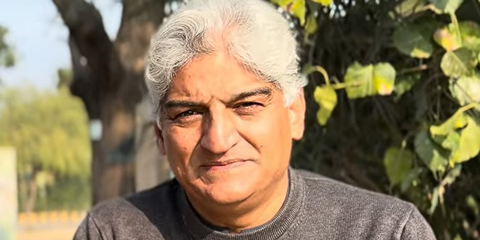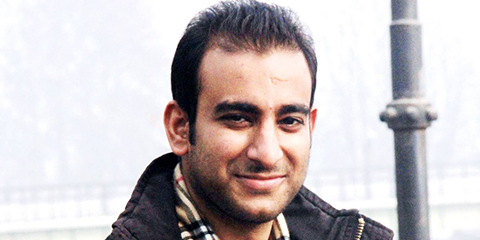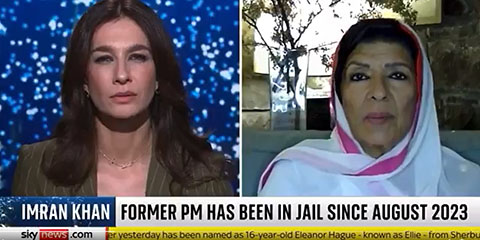The good, the bad, and the biased: a close look at Pakistani news channels
JournalismPakistan.com | Published 2 years ago
Join our WhatsApp channel
ISLAMABAD—Pakistan's vibrant media industry has numerous news channels, both on television and online, that provide information and entertainment to millions of viewers across the country. However, as with any media landscape, Pakistani news channels are not immune to criticism.
One of the strengths of Pakistani news channels is their ability to cover breaking news events promptly. Whether it is a political rally, a natural disaster, or a terrorist attack, the channels are quick to report on the ground developments and provide real-time updates to their viewers. This has made them an important source of information for people across the country, especially those who may not have access to other sources of news.
However, the focus on breaking news has also led to a problem with sensationalism in Pakistani news channels. In the race to be the first to report breaking news, channels often prioritize sensational headlines and sound bites over factual reporting. This has led to a decline in journalistic standards and an erosion of trust in the media.
Another issue with Pakistani news channels is the influence of political parties on their content. Many news channels in Pakistan are owned by politicians or have close ties to political parties. This has led to a situation where news channels are more concerned with promoting the political agenda of their owners rather than providing objective news reporting. This problem is further compounded by the lack of transparency in media ownership in Pakistan, which makes it difficult for viewers to know who is really behind the news they are consuming.
Media bias is another problem in Pakistani news channels. Many news channels are accused of having a pro-government or pro-opposition bias, depending on their political affiliations. This has led to a situation where viewers are often not presented with a balanced view of events, but rather a one-sided perspective that reinforces their pre-existing beliefs.
In addition to these issues, there are also concerns about media ethics and censorship. The pressure to increase ratings and attract viewers has led some news channels to resort to unethical practices, such as sensationalizing news or airing inappropriate content. Meanwhile, censorship by the government and other powerful entities has led to self-censorship by journalists and a reluctance to report on certain sensitive topics.
Despite these challenges, Pakistani news channels remain an important source of information and entertainment for millions of viewers across the country.
To address the issues facing the media industry in Pakistan, there needs to be a renewed focus on journalistic standards, media ethics, and transparency in media ownership. Viewers also have a role to play by demanding unbiased and factual reporting from their news channels and holding them accountable when they fall short.
One area where Pakistani news channels have the potential to improve is investigative journalism. While there are some notable examples of investigative reporting in Pakistani media, such as the Panama Papers investigation by DawnNews, these instances are relatively rare. More often than not, news channels focus on reporting breaking news rather than delving deeper into stories to uncover the truth behind them. This is partly due to the lack of resources and training available for investigative journalism in Pakistan, but it is also because investigative reporting can be risky for journalists in a country where press freedom is not always respected.
Pakistani news channels also lack diversity in their newsrooms. While there are some female news anchors and reporters, they are often relegated to covering "soft" news stories such as entertainment and lifestyle, rather than hard news. This is a missed opportunity for news channels to provide a more diverse range of perspectives and voices in their reporting. There is also a lack of representation of minority communities, which can lead to a lack of understanding and empathy for their issues.
In terms of international news coverage, Pakistani news channels tend to focus on events that directly affect Pakistan or have a connection to Pakistan, such as conflicts in neighboring countries or the actions of the United States in the region. This can lead to a lack of coverage of important international events that do not have an immediate impact on Pakistan. Furthermore, the coverage of international news can be biased toward the interests of Pakistan, which can lead to a lack of objectivity in reporting.
Finally, it is worth noting that Pakistani news channels have made significant strides in recent years in terms of technological advancements and online presence. Many news channels now have active social media accounts and websites, allowing them to reach a wider audience and provide news updates in real time.
However, there are still concerns about the quality and accuracy of reporting on these platforms and the need to maintain journalistic standards in the digital age.
The news channels are a critical source of information and entertainment for millions of viewers. However, to address the challenges of sensationalism, media bias, political influence, and lack of diversity and investigative reporting, news channels must prioritize journalistic standards, media ethics, transparency in media ownership, and diversity in their newsrooms. By doing so, they can regain the trust of their viewers and play a more positive role in Pakistani society.

























